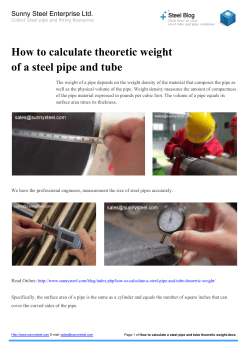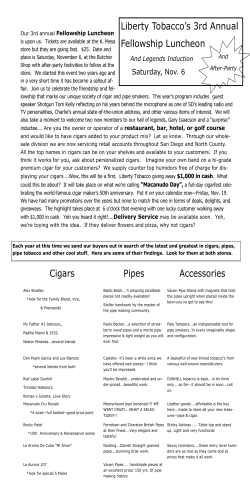
Why ChOOSE BUTELINE 3
Why CHOOSE BUTELINE 3 More Tensile Strength After 10 years exposure to continuously applied stress at 70°C, PB-1 pipe retains 40% more strength than PEX pipe. 3 Larger Inner Diameter of Pipe The superior strength of PB-1 means that a reduced wall thickness is possible, giving a larger inner diameter for the pipe (refer to Figure 1 overleaf). 3 Better Flow Rates The larger inner diameter of PB-1 pipe gives higher flow rates (by more than 30% at similar pressure) compared to PEX Pipe. 3 Lighter Weight & More Flexibility The strength of PB-1 that allows reduced wall thickness means that PB-1 pipe is lighter and more flexible than PEX pipe. 3 Less Noise (Water Hammer) The lower density and better elasticity of PB-1 means less sound velocity compared to PEX (620 m/s vs 800 m/s), translating to less noise and all but eliminates the effects of water hammer (refer to Table 2 overleaf). 3 Reduced Thermal Conductivity The heat loss factor for PB-1 is approximately half that of PEX due to PB-1’s better natural insulating properties. This means that hot water remains hotter and cold water is less likely to freeze in PB-1 pipe. 3 Less Thermal Expansion / Contraction Due to its lower thermal expansion co-efficient (refer to Table 3 overleaf), PB-1 pipe will expand and contract 1 10 of what PEX does at similar temperatures. This makes PB-1 easier to install and more stable during use. The elasticity of PB-1 also gives it the greatest ability to return to its original size and shape after being subjected to the stress of thermal expansion, whereas the extra expansion in PEX causes extra stress to the fittings, assisting in degradation of the joint. 3 Better Performance in Freezing Conditions Due to PB-1’s elasticity, PB-1 is the preferred choice for water reticulation in climates where freezing conditions are possible. 3 Less Environmental Impact PB-1 Pipe and Buteline thermoplastic fittings are made from materials that are able to be recycled (and it also takes less energy to recycle them than metallic materials). They also consume 50% less energy to produce and install than other plastic systems. DID YOU KNOW? PB-1 and PEX should never be used on an untempered solar hot water line. www.buteline.com PB-1 Pipe Performance Comparisons Polybutene-1 (PB-1) offers many advantages over other plastic alternatives: Table 1. Comparative Pipe Performance Polybutene-1 (PB-1) PE-X PP-R Creep Resistance Excellent Poor Good Flexibility Excellent Good Moderate Good Good Good Weldability Yes No Yes Stress (Thermal Expansion/Contraction) Low Moderate High Good Good Good Chemical Resistance Impact Strength Figure 1. PB-1 PE-X PP-R PVC-C Table 2. Density (g/cm3) Sound Velocity (m/s) Polybutene-1 (PB-1) 0.93 620 PE-X 0.95 800 Copper 7.20 3,900 Material Table 3. Polybutene-1 (PB-1) 0.000013 mm / mm / °C Polypropylene (PP-R) 0.000086 mm / mm / °C HDPE and PE-X 0.000130 mm / mm / °C PBPX1109 Coefficient Of Linear Expansion Of Polymer * If you would like more information, please contact your local Buteline office or visit www.buteline.com www.buteline.com
© Copyright 2026











